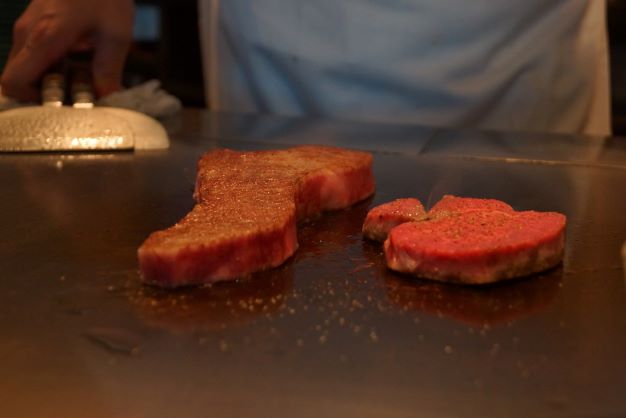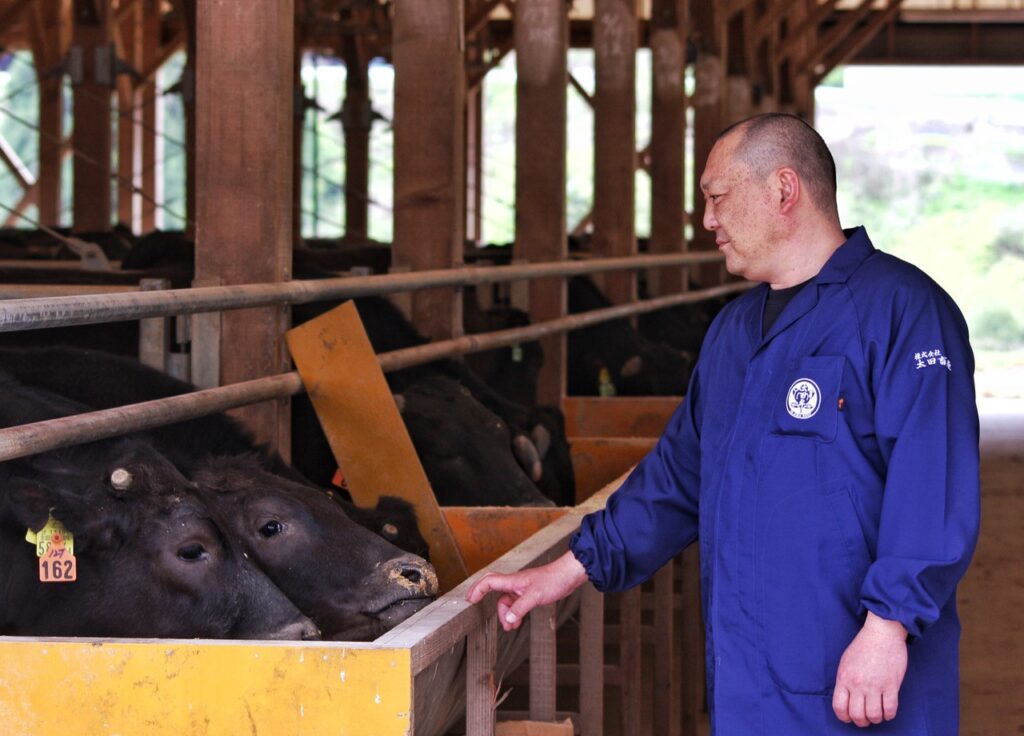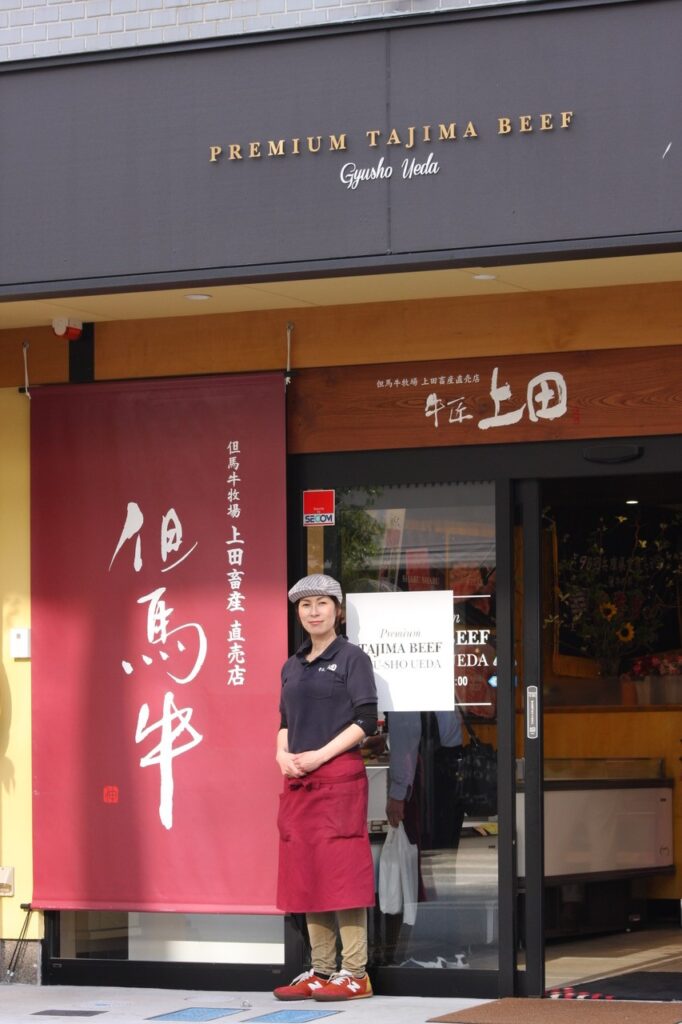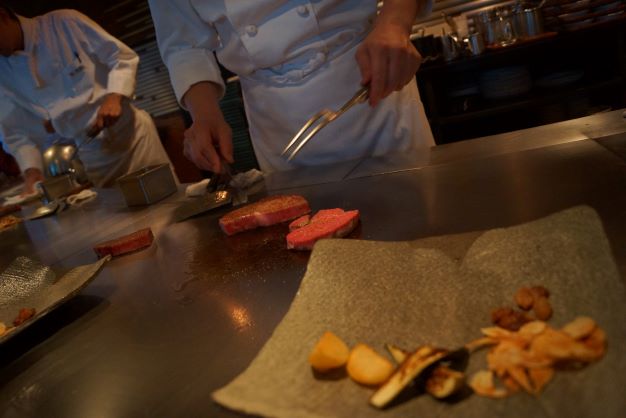There are many reasons to travel to Japan, and food is near the top of many people’s lists.
Certainly sushi is Japan’s most famous dish, but perhaps its most famous food-related brand is Kobe beef. Not Matsuzaka beef. Not Omi beef.
Kobe beef.
That’s not because Matsuzaka beef is less delicious – few people on earth, no matter how sophisticated their palates, can tell the difference between Matsuzaka beef and Kobe beef – but because of history.
In 1868, when Kobe was opened to foreign trade, resident foreigners and visiting sailors fueled demand for beef, which previously had been little eaten by (Buddhist) Japanese.
In 1869, the acting British Consul in the town that would become Kobe wrote, “Great attention is now being paid to the breeding and rearing of cattle … and their superiority over cattle of other parts of Japan is attributed to the better quality of food procurable.”
Today, Kobe beef farmers will tell you that environment (climate and feed) are critical to the production of top-quality Kobe beef, but equally important are genetics. The Kobe Beef Marketing & Distribution Promotion Association grades and approves Kobe beef, and the starting point for qualification is that cows (and bullocks) must be 100 percent pure descendants of Japanese Black cows from Tajima, a mountainous region in the north of Hyogo prefecture, and born, raised and slaughtered in the prefecture.
In sushi restaurants, one of the most prized – and expensive – portions of tuna comes from the lower belly of the fish, and is called o-toro. O-toro is the fattiest part of the tuna, and aficionados favor it in winter, when the tuna have packed on extra fat to ward off the cold.
In Kobe beef, the marbled fat is known as shimofuri, and dissolves at low temperatures, providing the sensation that the meat is melting in the diner’s mouth.
Only when farmers succeed in developing the right balance is the beef they raise entitled to be called “Kobe beef”. The Japan Meat Grading Association assesses meat quality according to four factors: beef marbling; meat color and brightness, meat firmness and texture; and the color, luster and quality of the beef fat. The association issues certificates to farmers, linked to the unique 10-digit numbers their cows were assigned at birth, plus a nose print, and information about their quality.
Almost 10 years ago, Shinya Ueda, a 51-year-old breeder/feeder who has been farming Kobe cattle for 25 years, won the Distinction Award as the “best of the best” at the annual Kyorei Kai cattle show. He explains that the Japan Meat Grading Association issues a Beef Marbling Score (BMS) that qualifies beef (or doesn’t) as “Kobe beef” in Japan.
“A BMS score of six or above is necessary for qualification as Kobe beef,” Ueda explains. “The scale runs up to 12, but I like a score of nine, and I try to raise my cows to meet that standard. The amount of fat affects flavor and texture, and ultimately, what you prefer is a matter of personal taste.”
Half an hour up the road from the Ueda farm are the barns of another prize-winning farmer, Katsunori Ohta. Katsunori and his brother Tetsuya earned the Kobe Beef Association’s Distinction Award in 2011 and 2012, and they not only raise cattle but also serve it to consumers in three restaurants and a retail shop.
Ohta says, “The cows themselves are not large, but the key to raising top-quality Kobe beef is balance and proportion. Of course pedigree is important, but it is the feeding that produces champion cattle. Every farmer has his own ‘secret’ recipe, but basically we are feeding our cattle a blend of rice straw, soybean, maize, barley and other cereals.”
At the New York Grill in Tokyo’s Park Hyatt Hotel (you remember it from Lost in Translation), a 180-gram piece of prime Kobe beef will set you back almost ¥30,000 (USD215), but a much less expensive omiyage (souvenir) of a trip to Kobe beef country in Hyogo prefecture can be had at the retail shop Ueda-san and his wife Miyuki maintain in the town of Toyooka, on the Japan Sea coast.
The small, well-designed shop features the usual refrigerated case displaying cuts of meat, but also, on the wall are posted certificates attesting to the provenance of the beef for sale. From Miyuki-san you can learn that all the cuts of a Kobe cow are called Kobe beef, and that while the filet is the most expensive, there are plenty of less expensive options.
We spent around USD75 on around 500 grams of “zabuton” beef, which comes from the short rib, and we bought some of the Uedas’ soy-based marinade. Miyuki put some Kobe beef tallow into our package, and sent us on my way with a single instruction: “Don’t overcook it!”
Dear reader, we did not. After melting a small bit of the beef tallow, we seared our steak (Miyuki’s assistant had sliced it into small pieces the size of business cards, around 70 millimeters thick) over high heat for less than a minute on each side, and seasoned with salt and pepper (we’re saving the marinade for future, less pedigreed dinners). It was delicious. No, really. Absolutely melt-in-your-mouth delicious.
One last note: You can get Kobe beef outside Japan, but there are a few things you should know.
First, if your local restaurant is offering “Kobe beef”, it should be Kobe beef, raised by Ueda-san, Ohta-san or another farmer in Hyogo prefecture in Japan, and it should have come with a certificate featuring the cow’s 10-digit identification number and nose print. If in doubt, ask. Unfortunately, plenty of restaurateurs sell “Kobe beef” that is not, in fact, Kobe beef. The beef may be excellent, but do you want to pay the premium associated with the name? That’s up to you.
Second, it’s worth knowing that “wagyu” is a Japanese word meaning “domestic beef”. In Japan, wagyu means Japanese beef. In other countries, “wagyu” could technically mean “domestic beef”, but the suggestion is that it’s Japanese beef. Again, do you want to pay the premium associated with the name? That’s up to you. Finally, some farmers outside Japan raise “Wagyu-style” or “Kobe-style” beef, which should be the result of Japanese cattle crossbred with local (e.g. Angus) cattle. In many cases these cattle are intentionally bred to cater to local tastes, which often means they are less marbled with fat. Still tasty, but different.








